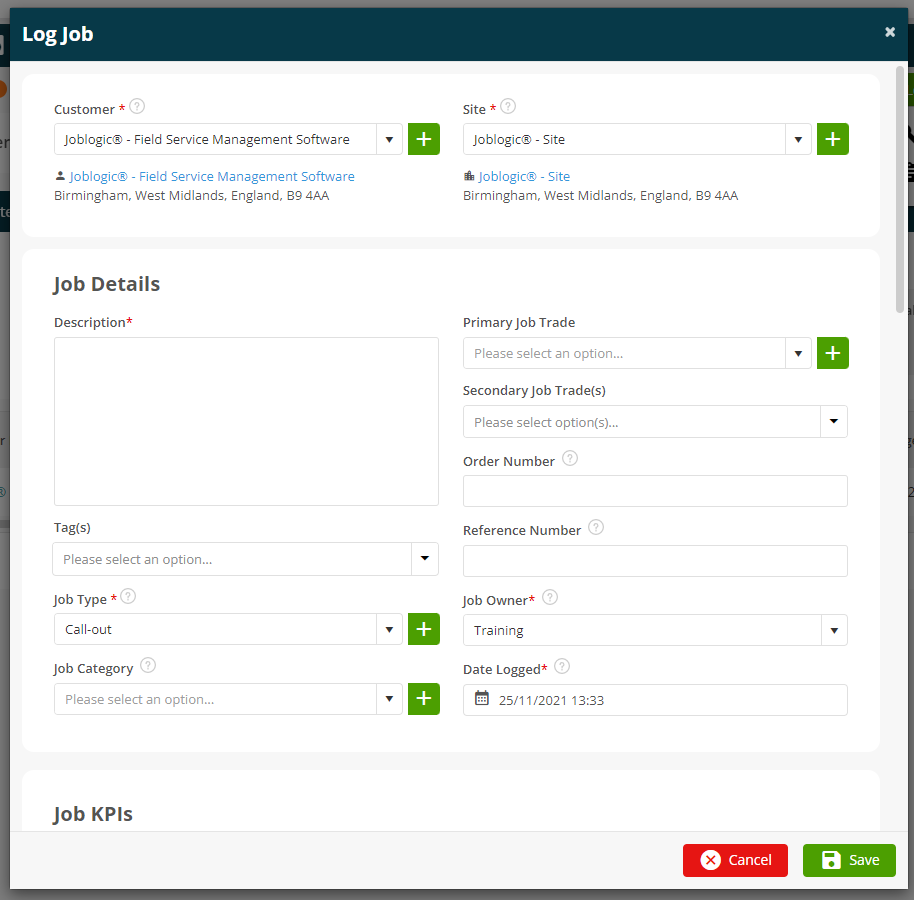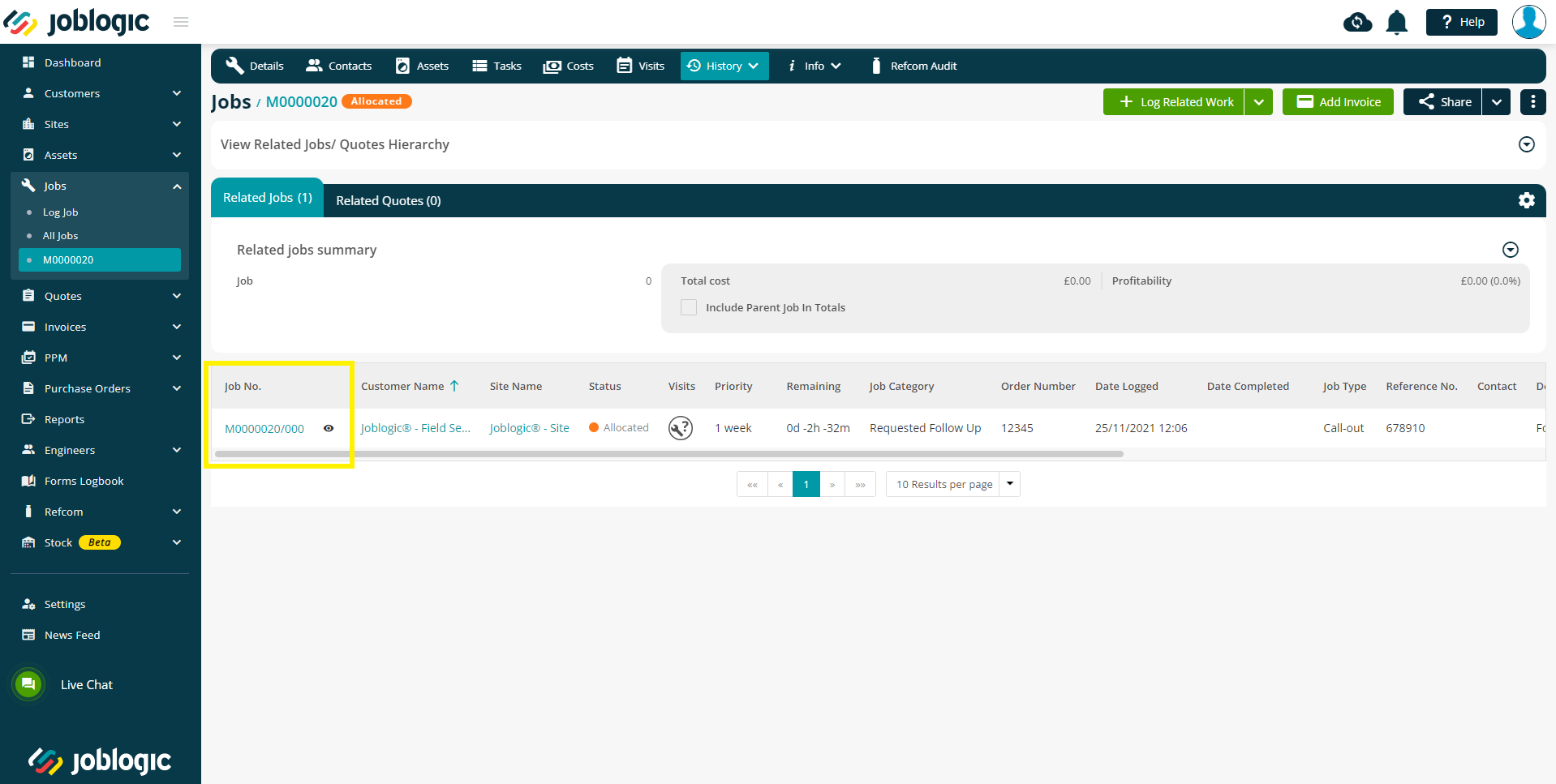- 30 Apr 2024
- 4 Minutes to read
- Print
- PDF
Logging Related Jobs
- Updated on 30 Apr 2024
- 4 Minutes to read
- Print
- PDF
Introduction
Joblogic permits users to log a related job(s) to an initial job allowing for associations between differing work under the same project/area. This user guide details how to log a related job to an initial job within the back office.
How to Log a Related Job
In order to log a related job, navigate to the initial job via ‘Jobs’ > ‘All Jobs’ within the left side main menu and use the search and filter tool to locate the job.
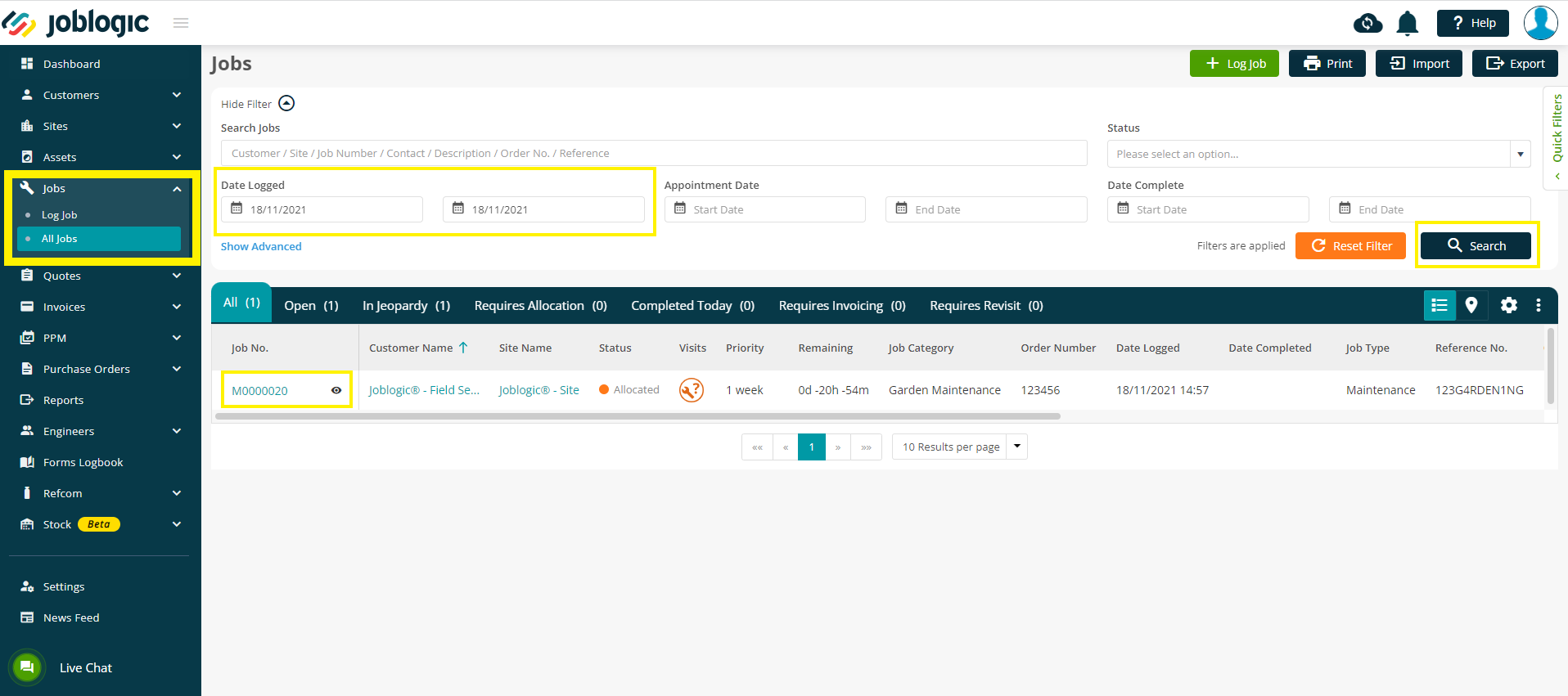
Select the job and navigate to the ‘History’ tab from the tabs list towards the top of the page.
Select the ‘Related Works’ option from the dropdown menu.
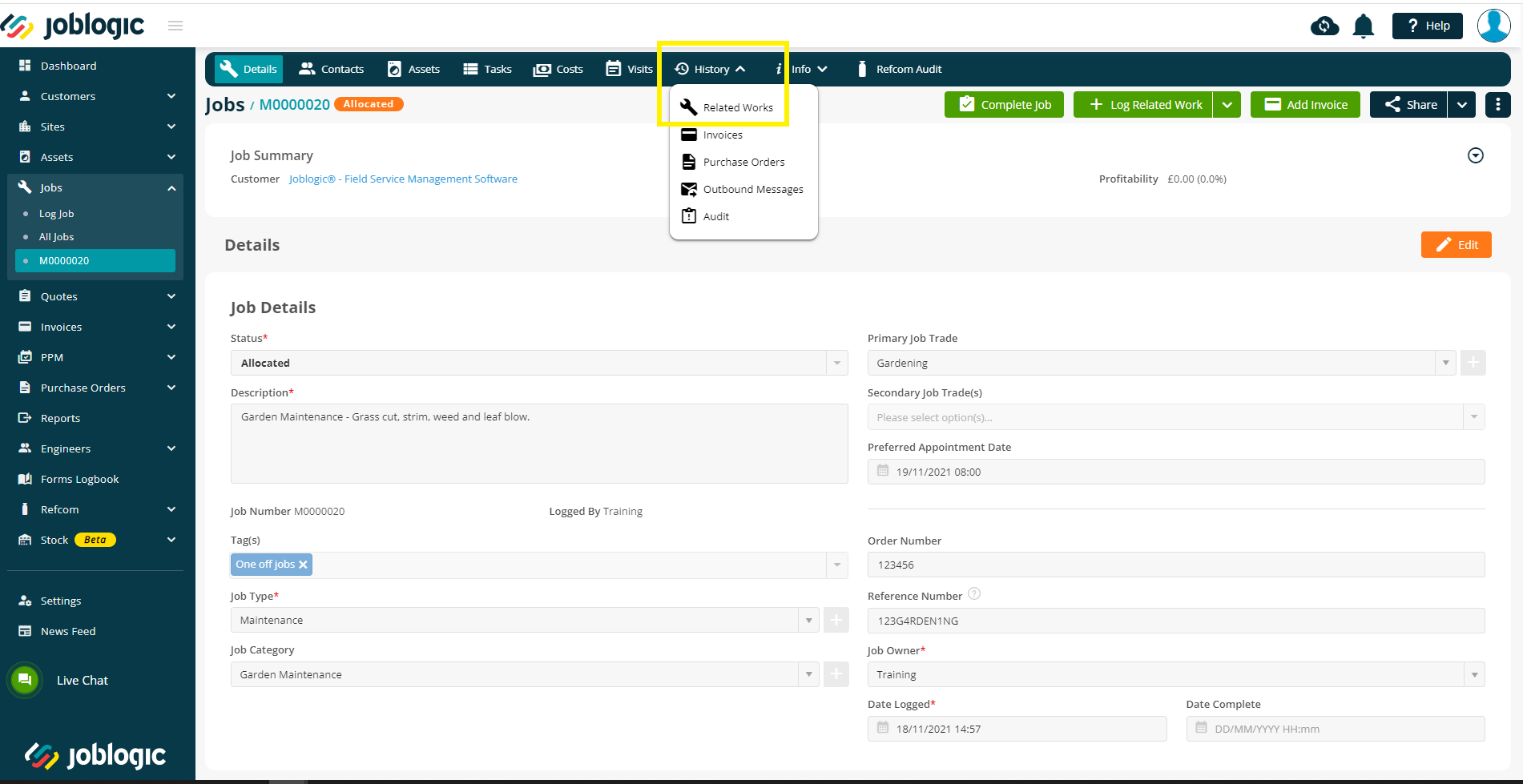
Navigate to the ‘+ Log Related Work’ dropdown menu and select ‘Log Related Job’.
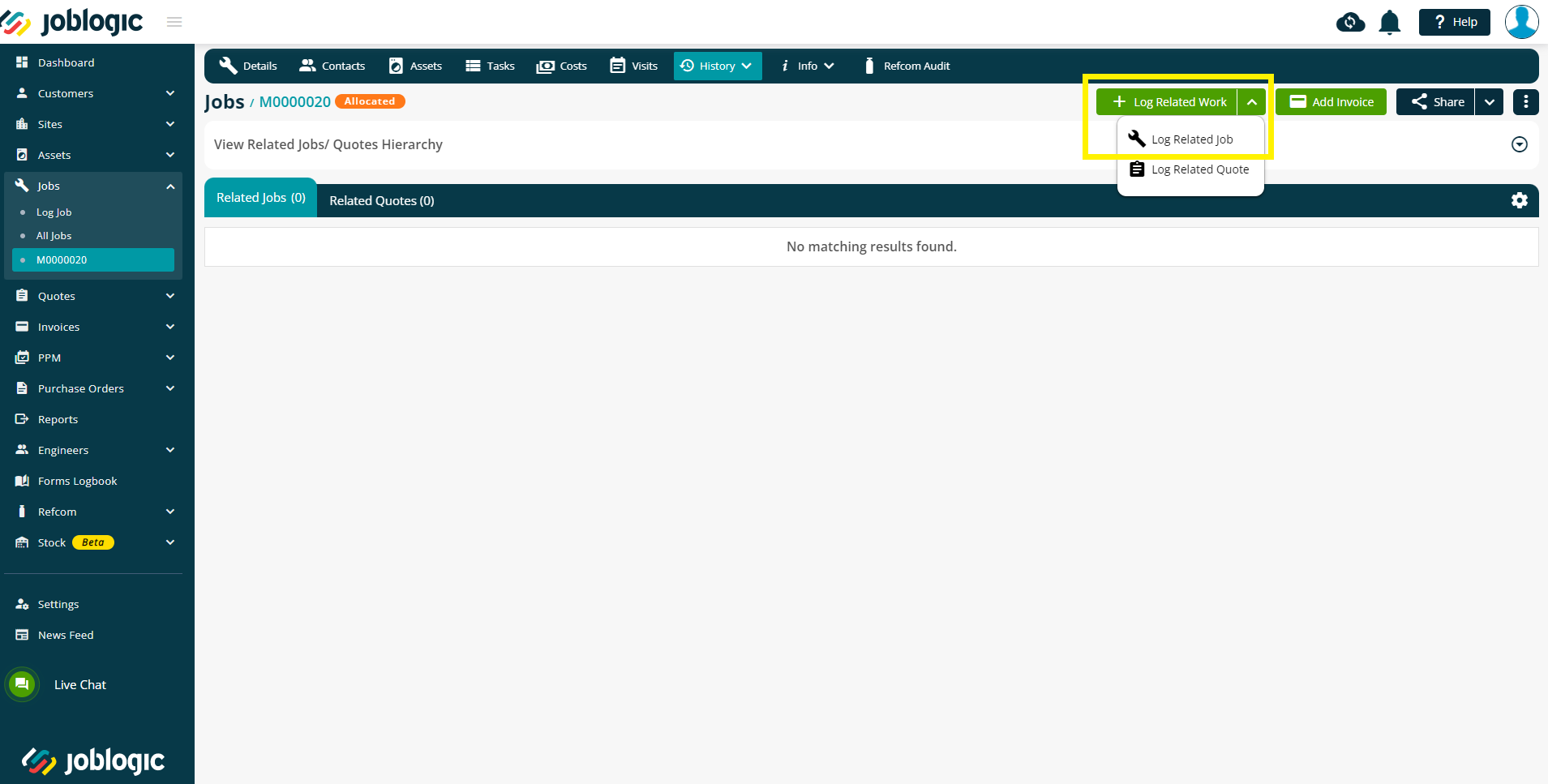
Fill in the details of the ‘Log Job’ window. There are mandatory items, marked with a red asterisk which must be filled in in order to log the related job.
Mandatory Fields which must be Populated
Select the customer that the job is for and the site that the work will take place at. These will automatically populate based on the details of the initial job but can be changed to a differing customer or site, if required.
Within the ‘Job Details’ area, enter a description of the job detailing the work to take place and select the job type (a general category for the type of work such as ‘call out’ or ‘maintenance’).
The ‘Job Owner’ and ‘Date Logged’ fields will automatically populate as per the user account being used and the current time but these can be manually amended, if required.
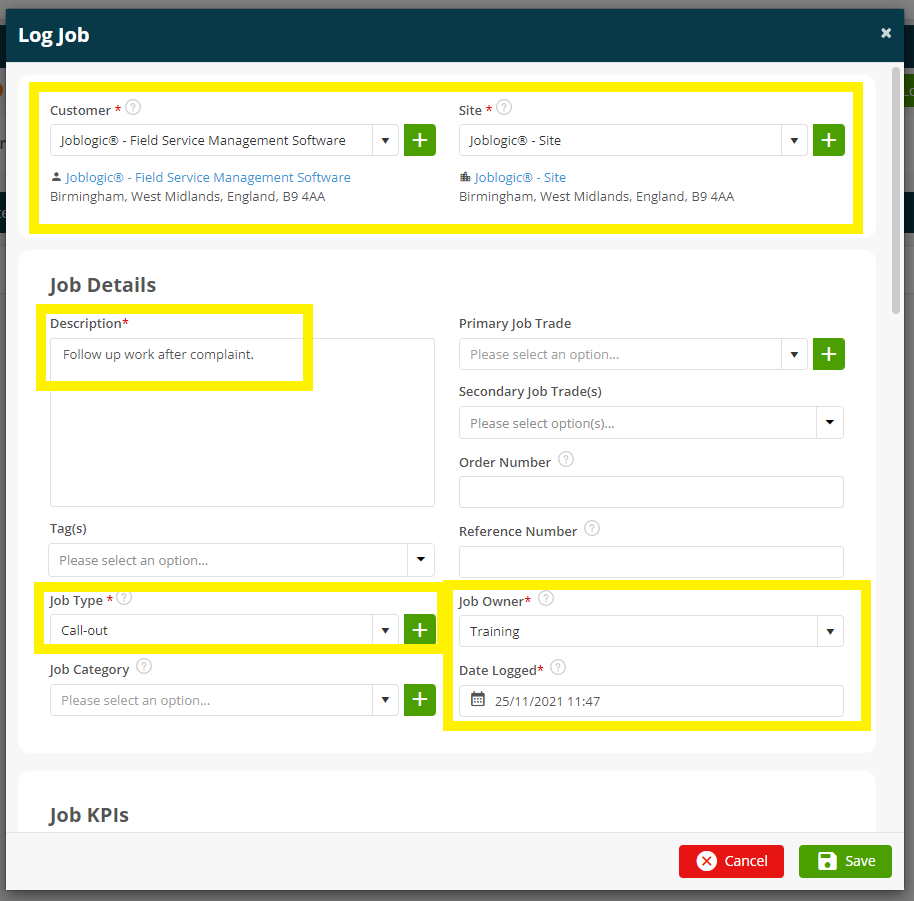
There are a number of additional, non-mandatory fields available to fill in when logging a related job. These can be used to provide extra information about the job, to further categorise it and to aid with searching or reporting.
Additional, Non-Mandatory Fields
These fields can be either free typed or will need to be set up in the settings area and selected from the dropdowns where applicable.
Non-mandatory fields within the ‘Job Details’ area are defined below:
Tags - Customised labels which can be applied to jobs to search with and report on. Typically used when a label which does not exist in the system's existing fields is required.
Job Category - A further level of job categorisation to job types. For example, a job with a ‘Call-out’ job type may then be assigned a ‘Requested Follow Up’ category.
Primary and Secondary Job Trades - These are used to assist in assigning applicable engineers to the job by matching those of a certain trade to it.
Order and Reference Number - None system generated numbers such as your customers or companies reference and purchase numbers or codes.
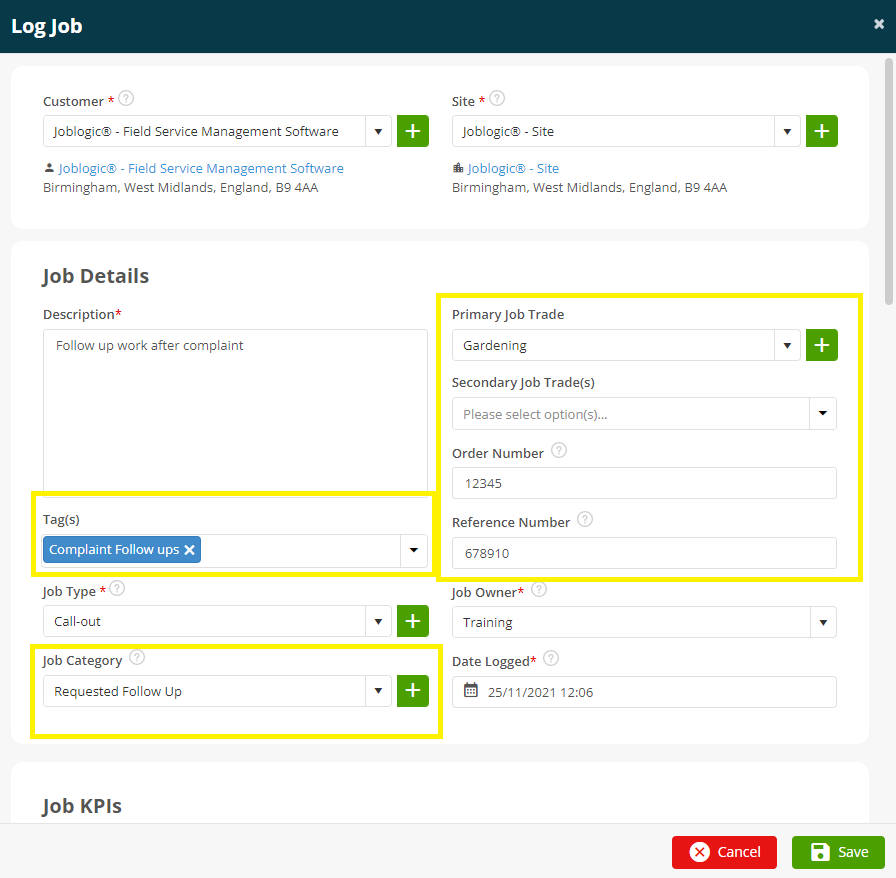
Scroll down to the ‘Job KPIs’ and ‘Priority Level’ area. This section refers to setting a target response or attendence time against the job such as an emergency or 1 week response.
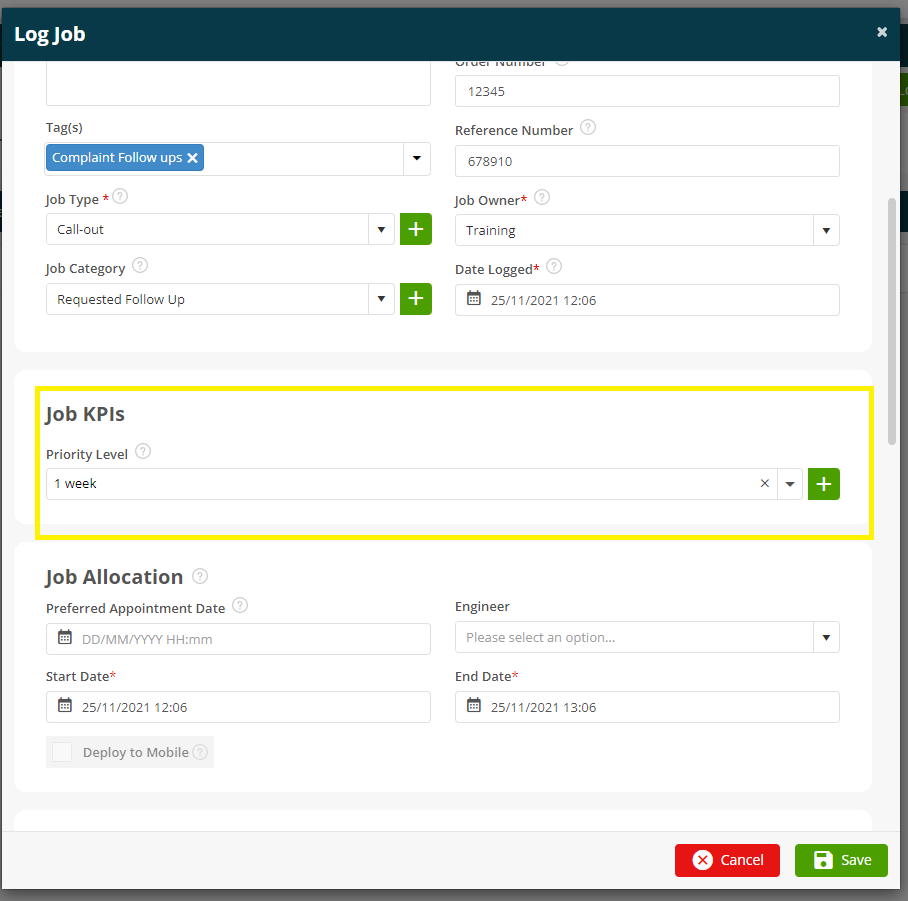
The ‘Job Allocation’ area refers to allocating an engineer a visit to the job (this can be left and allocated at a later point if not yet decided or confirmed).
The ‘Preferred Appointment Date’ refers to the desired time and date discussed with or asked for by the customer.
The start and end date fields refer to the actual time that the visit is scheduled to take place.
The ‘Engineer’ field refers to the engineer assigned that visit to the job.
There is also a ‘Deploy to Mobile’ tick box. Ticking this will deploy the visit to the job to the allocated engineer’s mobile device upon logging the job.
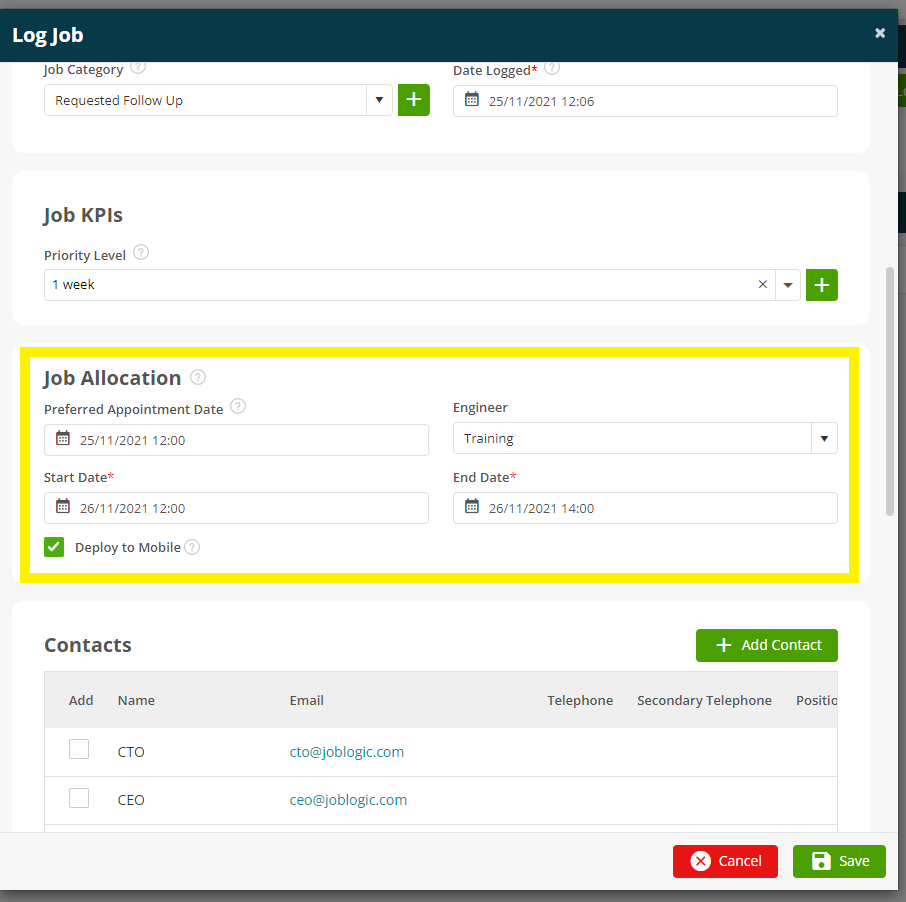
The ‘Contacts’ area allows you to assign already set up customer and site contacts to the job by ticking their appropriate tick box. Additionally, an entirely new job contact can be added via the ‘Add Contact’ button.
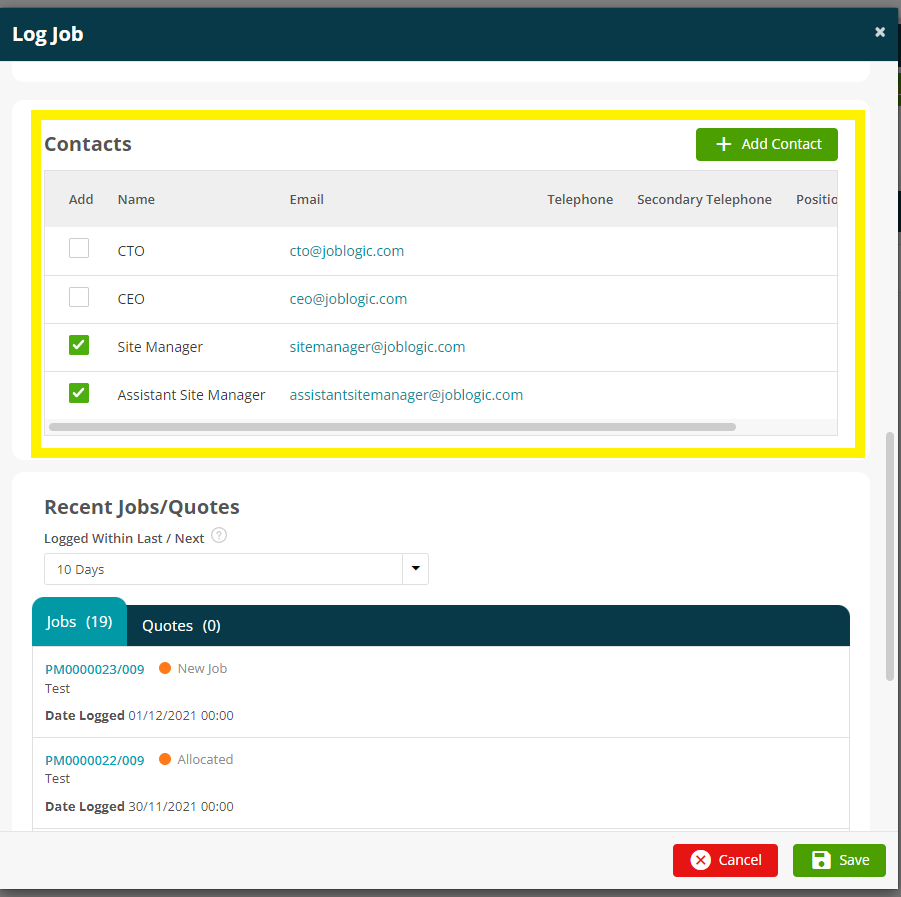
Finally, the ‘Recent Jobs/Quotes’ area allows the user to see any previously logged jobs or quotes within a certain timeframe for reference such as the initial related job. The time frame can be amended via the drop down arrow.
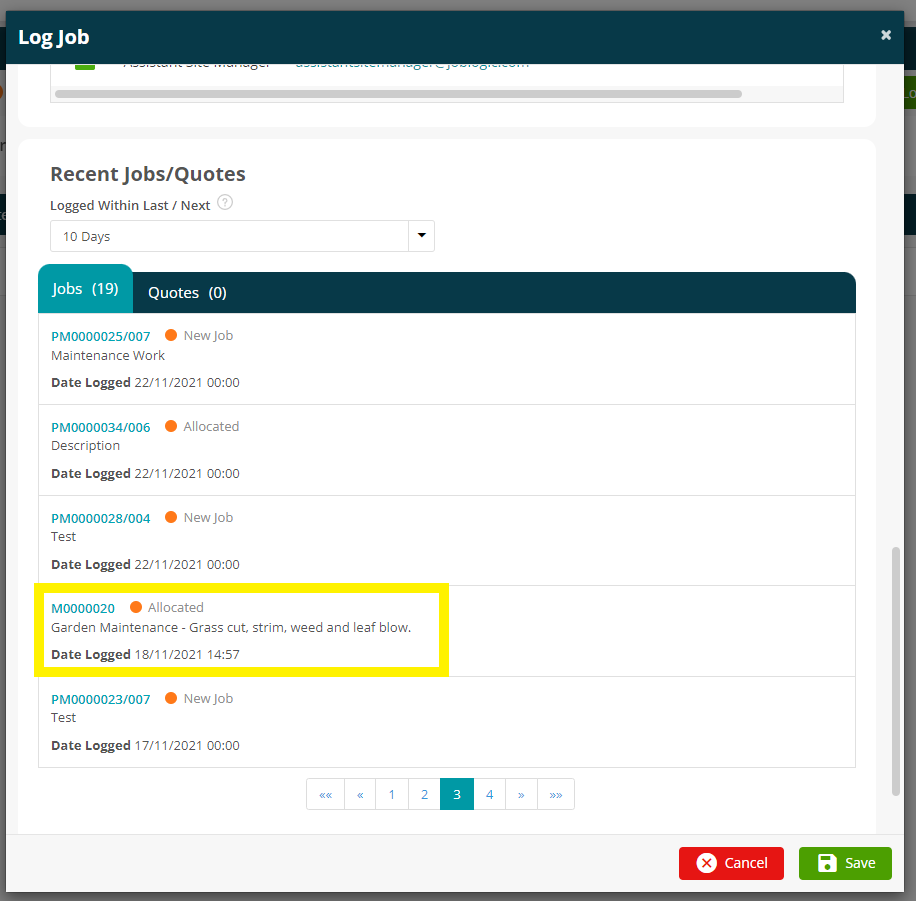
Once all of the required data has been entered for the related job, select the ‘Save’ button and the job and entered data will log within the ‘All Jobs’ area. The job will be allocated a unique system generated job number which can be searched in addition to the data just entered. The system generated job number will incorporate the initial job’s number in order to show it’s association. This is indicated by stating the initial job number followed by a ‘/’ and subsequent identifying numbers. The subsequent identifying numbers will increment by 1 with every new related job raised from the initial job such as M0000020, M0000020/000, M0000020/001.
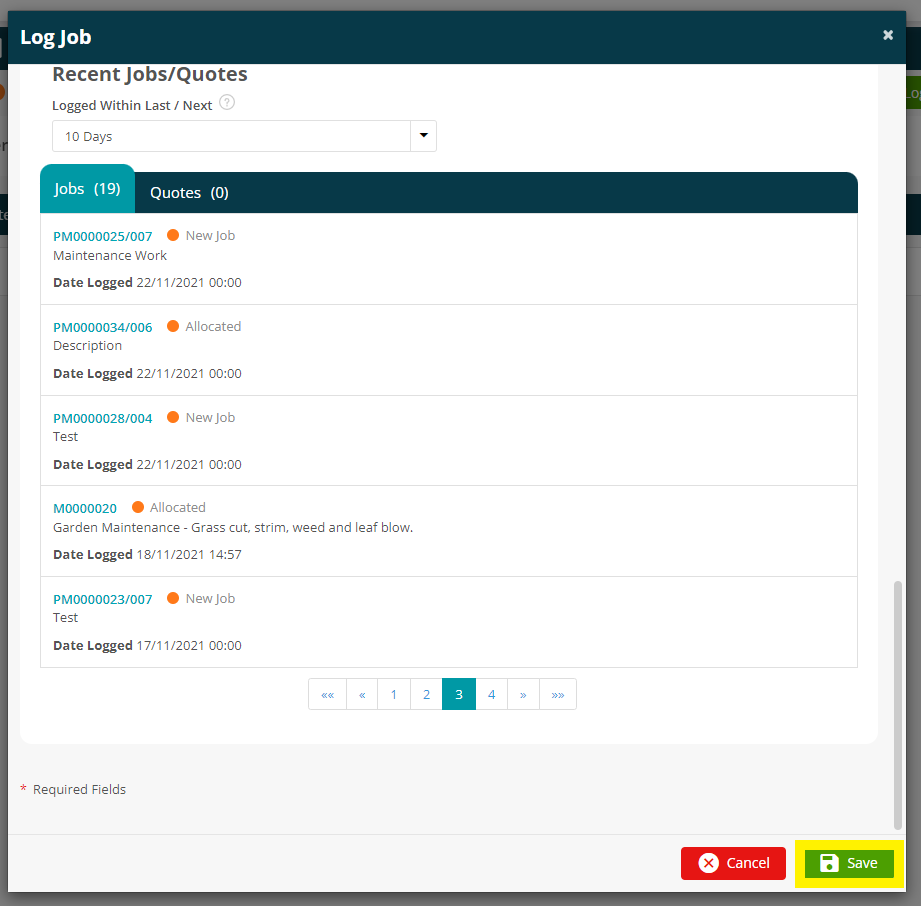
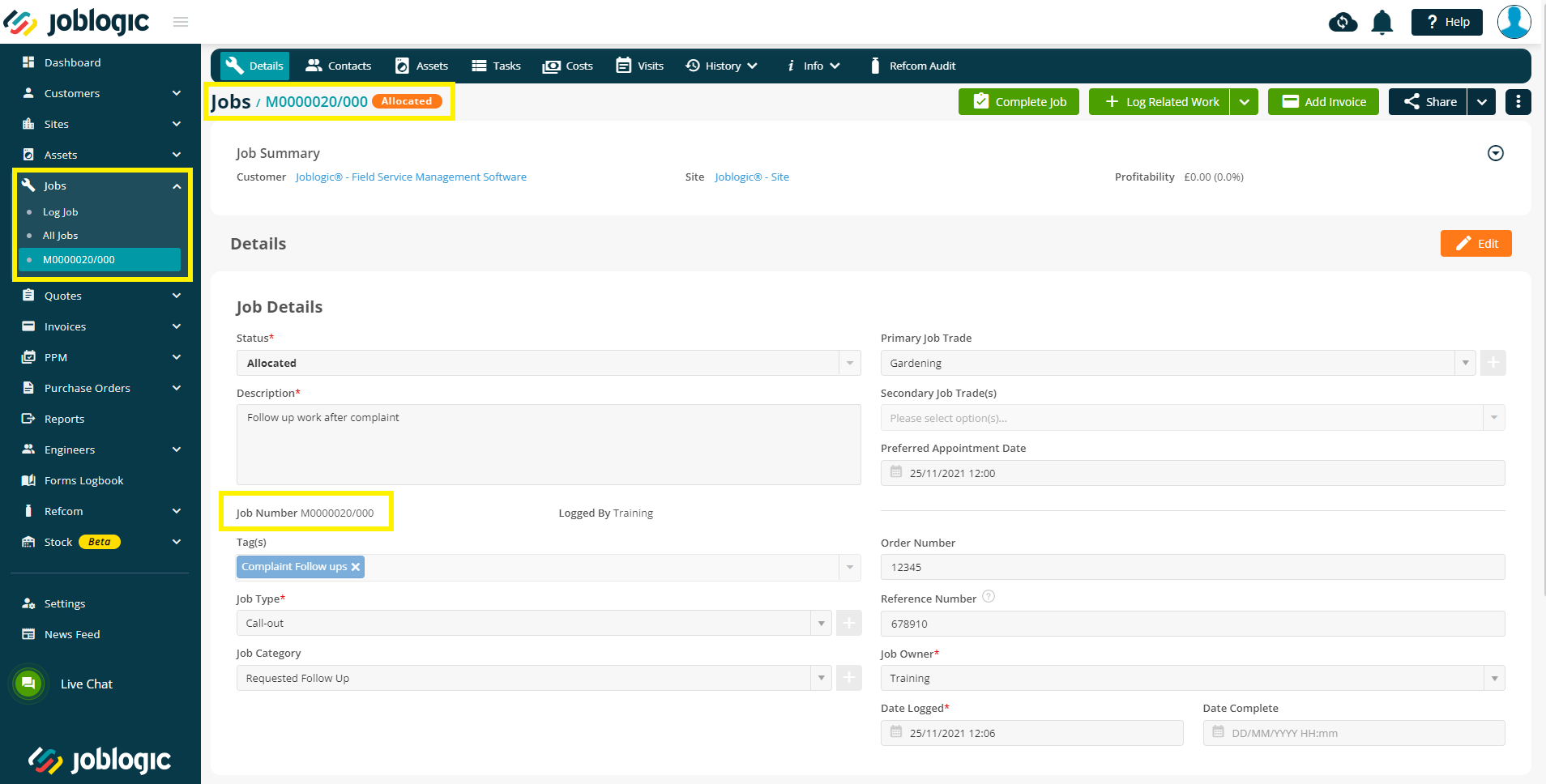
Viewing the Association between Related Jobs
The association between related jobs can be viewed via the history tab of both the initial job and the secondary related job.
Initial Job:
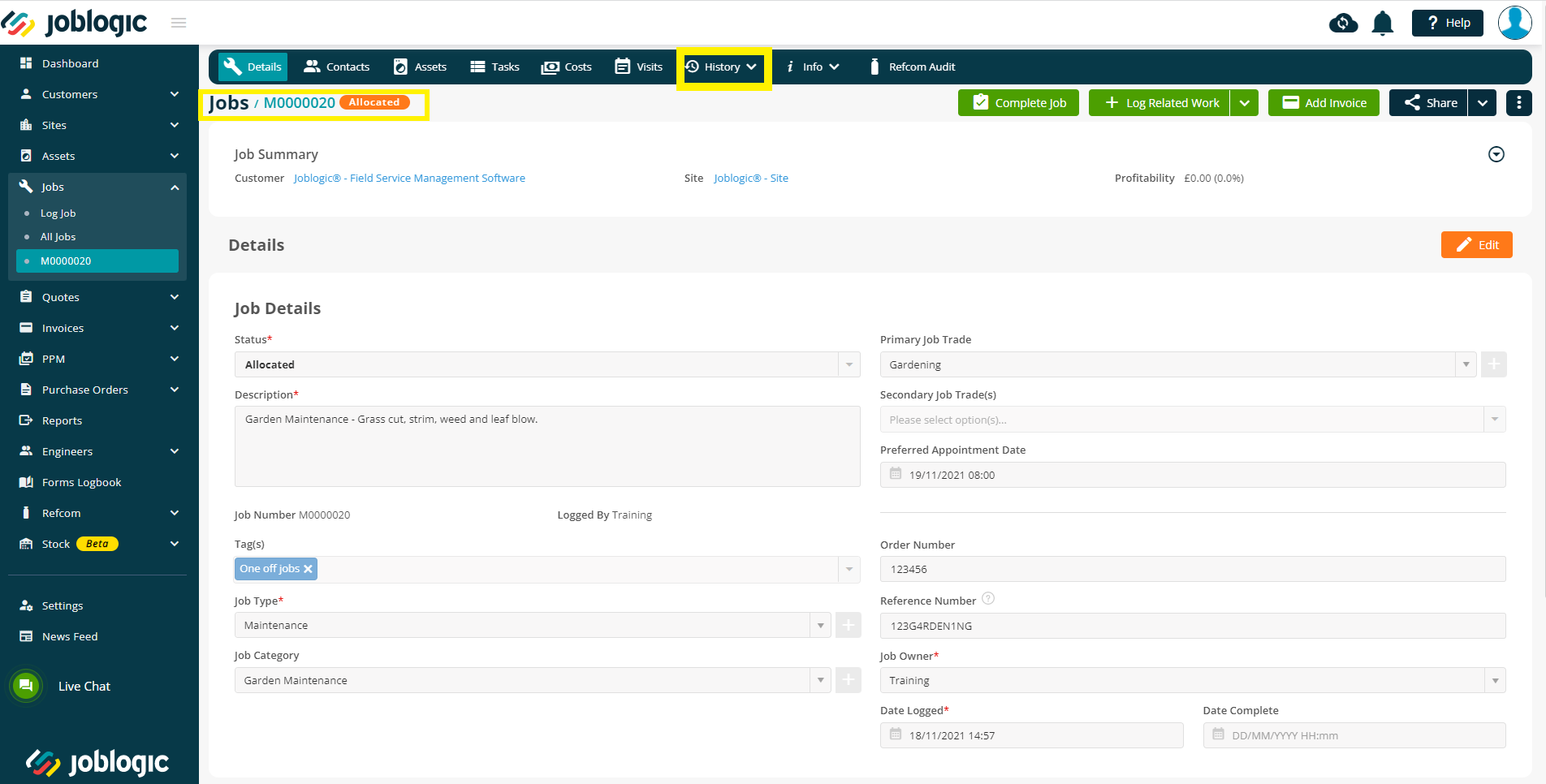
Related Job:
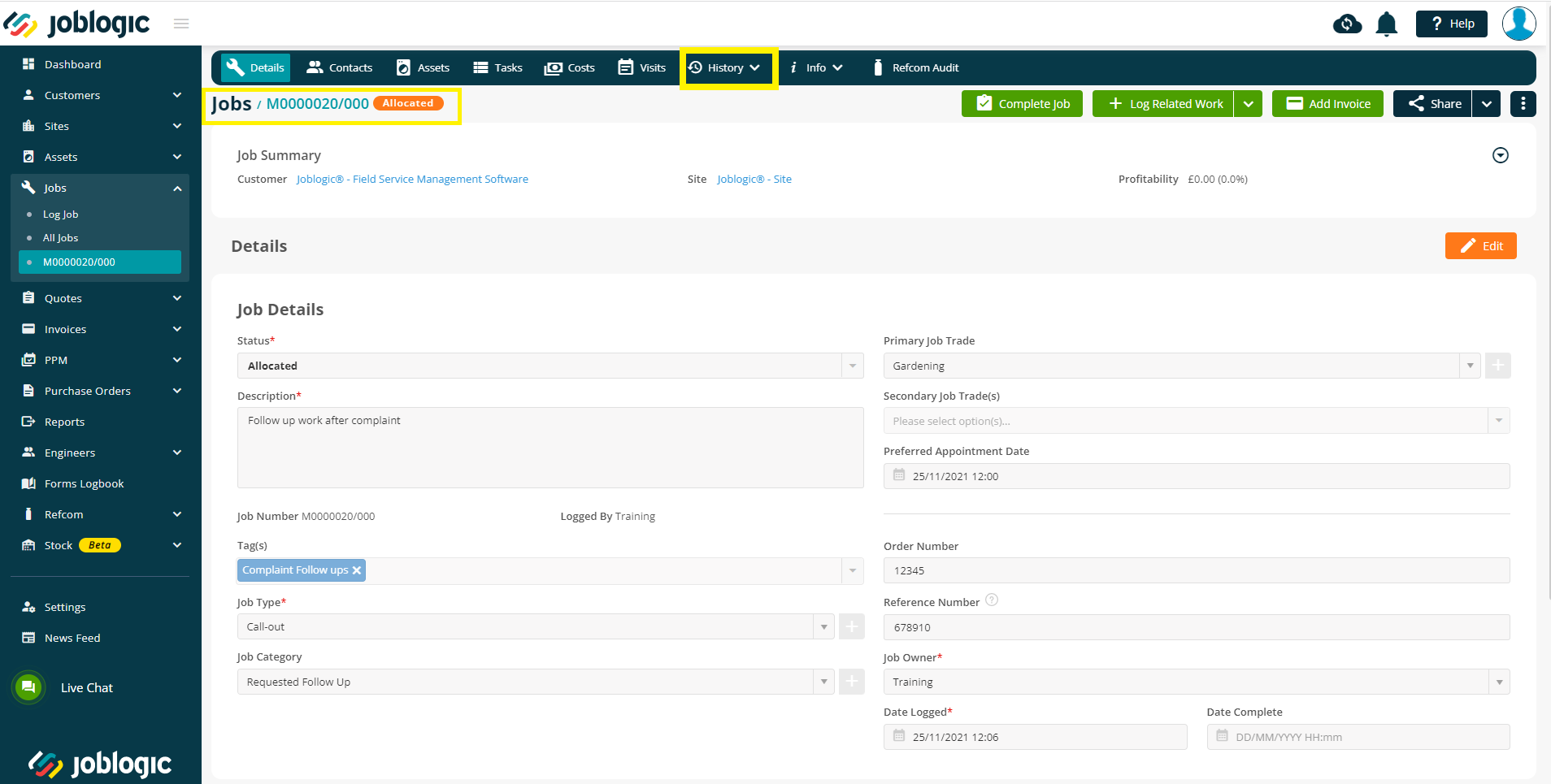
Select the ‘Related Works’ dropdown under the ‘History’ tab of either job.
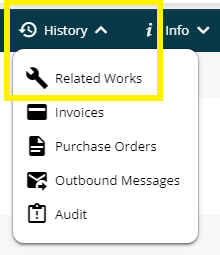
A related jobs area presenting any related work will be presented. The original/related job can be accessed by selecting the blue hyperlinked job number.
Initial Job:
Related Job:

Further Support
For further information or assistance with the above, contact our Support Team on 0800 326 5561 or email support@joblogic.com. Alternatively, our Customer Success Management team can be reached by emailing customersuccess@joblogic.com
Publishing Details
This document was written and produced by Joblogic’s Technical Writing team and was last updated on the date specified above. Be aware that the information provided may be subject to change following further updates on the matter becoming available or new releases within the system. Additionally, details within the guide may vary depending on your Joblogic account’s user permissions and settings.


